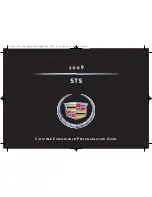
Black plate (436,1)
北
米
Model "A2440BE-B" EDITED: 2007/ 5/ 7
13-8
Consumer information and Reporting safety defects
tires every 7,500 miles (12,000 km).
Rotating the tires involves switch-
ing the front and rear tires on the
right-hand side of the vehicle and
similarly switching the front and
rear tires on the left-hand side of
the vehicle. (Each tire must be kept
on its original side of the vehicle.)
Replace any damaged or unevenly
worn tire at the time of rotation.
After tire rotation, adjust the tire
pressures and make sure the wheel
nuts are correctly tightened. A
tightening torque specification and
a tightening sequence specification
for the wheel nuts can be found
“
Flat tires
”
section in chapter 9.
&
Vehicle load limit
–
how to
determine
The load capacity of your vehicle is
determined by weight, not by avail-
able cargo space. The load limit of
your vehicle is shown on the
vehicle placard attached to the
driver
’
s side B-pillar. Locate the
statement
“
The combined weight
of occupants and cargo should
never exceed XXX kg or XXX lbs
”
on your vehicle
’
s placard.
The vehicle placard also shows
seating capacity of your vehicle.
The total load capacity includes the
total weight of driver and all pas-
sengers and their belongings, any
cargo, any optional equipment such
as a trailer hitch, roof rack or bike
carrier, etc., and the tongue load of
a trailer. Therefore cargo capacity
can be calculated by the following
method.
Cargo capacity = Load limit
−
(total
weight of occ total weight
of optional equ tongue
load of a trailer (if applicable))
For towing capacity information and
weight limits, refer to
“
Trailer towing
”
section in chapter 8.
!
Calculating total and load ca-
pacities varying seating con-
figurations
Calculate the available load capa-
city as shown in the following
examples:
Example 1A
Vehicle capacity weight of the
vehicle is 800 lbs (363 kg), which
is indicated on the vehicle placard
with the statement "The combined
weight of occupants and cargo
should never exceed 363 kg or
800 lbs".
For example, if the vehicle has one
occupant weighing 154 lbs (70 kg)
plus cargo weighing 551 lbs (250
kg).
1.
Calculate the total weight.
















































